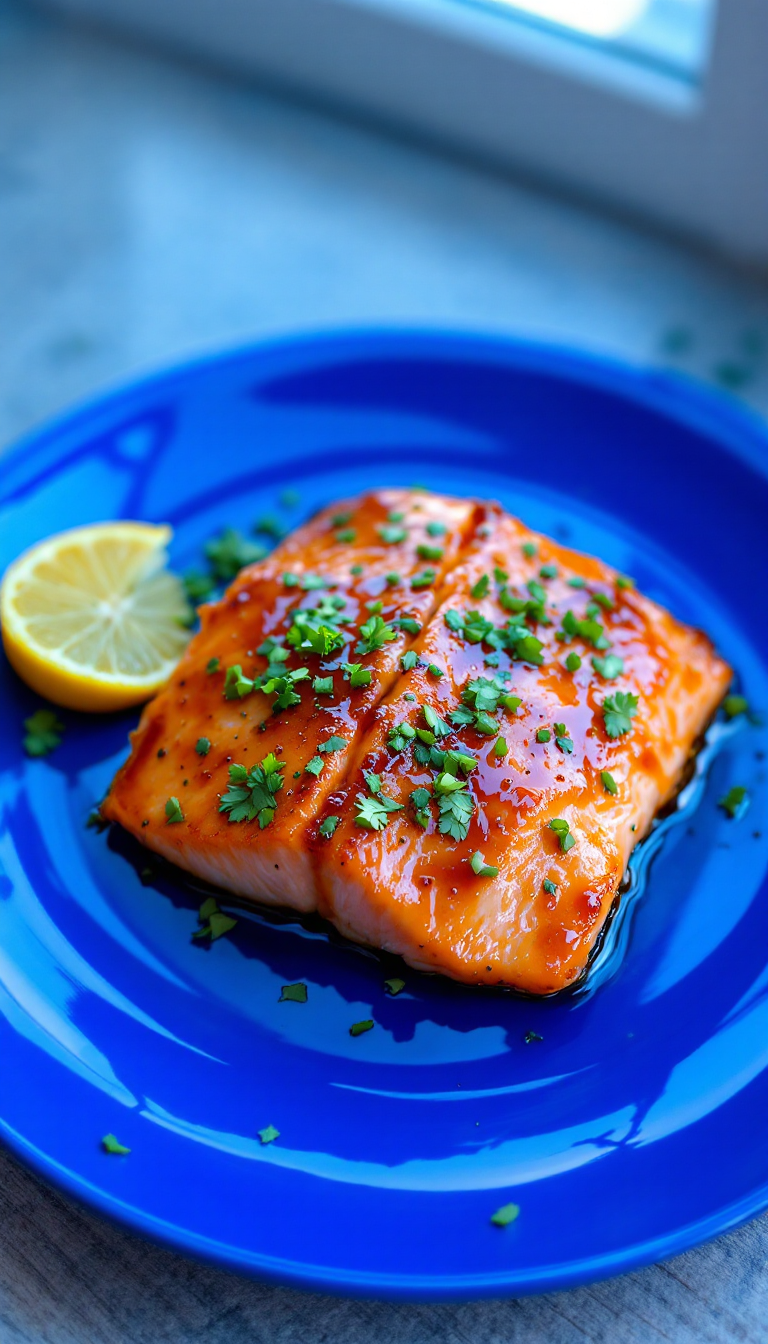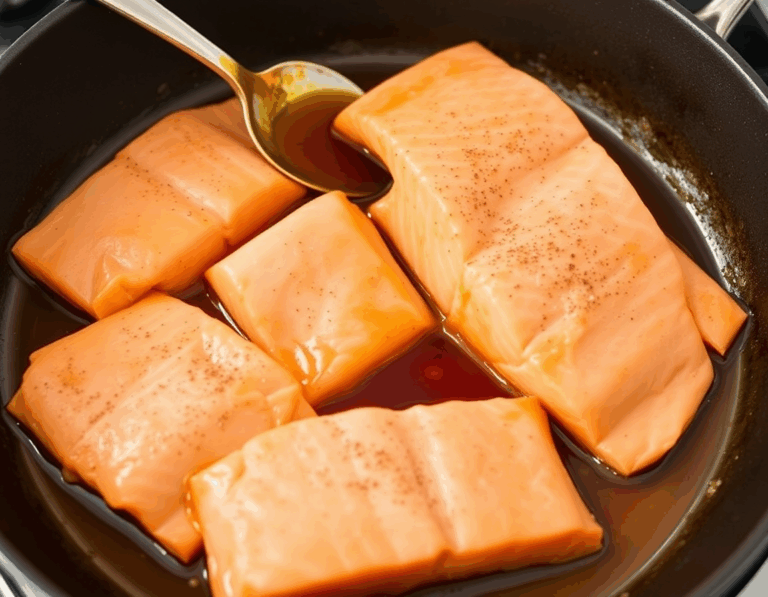There’s something about the sweet, sticky allure of honey glazed salmon that just sings to the soul—like a warm hug on a chilly day (or maybe that’s just me? ).
Imagine the crackle of the salmon skin as it hits the pan, the honey caramelizing to a beautiful golden hue. Oh, and did I mention the dash of soy sauce that adds just the right amount of umami?
It’s simple, yet delightful, a dish that feels like a luxury but is so easy to whip up on any weeknight.
Steps
- Dry the salmon fillets using a paper towel and season them with salt, pepper, paprika, and optional blackening seasoning. Preheat your broiler by adjusting the oven rack to the middle position.
- Melt the butter with olive oil in a large, oven-safe skillet on medium-high heat. Add minced garlic, water, soy sauce, sriracha, honey, and lemon juice, cooking for about 30 seconds until the sauce is warmed through.
- Place the salmon fillets in the skillet skin side down if they have skin, and cook them for 3 minutes. Use a spoon to frequently baste the fillets with the sauce from the pan.
- Broil the salmon for 5-6 minutes, basting once during the process, until the salmon is caramelized and cooked to your liking. Optionally, garnish with minced parsley before serving.
Ingredients
- 4 salmon filets, each weighing 6 ounces
- 1/2 teaspoon kosher salt
- 1/2 teaspoon black pepper
- 1/2 teaspoon smoked paprika (or regular paprika)
- 1/4 teaspoon blackening seasoning (optional)
- 3 tablespoons butter
- 2 teaspoons olive oil
- 6 cloves of garlic, minced
- 1/2 cup honey
- 3 tablespoons water
- 3 tablespoons soy sauce
- 1 tablespoon sriracha sauce
- 2 tablespoons lemon juice
Nutritional Values
Calories: 1924 | Total Fat: 97g | Saturated Fat: 41g | Cholesterol: 614mg | Sodium: 2956mg | Total Carbohydrates: 139g | Dietary Fiber: N/A | Sugars: 130g | Protein: 156g
FAQ
- Can I use frozen salmon for this recipe?
- While you can use frozen salmon, it’s recommended to buy fresh salmon from a grocery store for the best results. Fresh salmon tends to be thicker and more flavorful compared to the thinner, frozen fillets.
- Is it necessary to leave the skin on the salmon?
- It depends on your cooking method. If you plan to pan-sear the salmon, it’s beneficial to leave the skin on to protect the flesh from the heat and make it easier to handle. However, for this specific recipe, it doesn’t matter whether the fillets have skin or not.
- How do I prevent the salmon from becoming dry?
- To avoid overcooking the salmon, it’s crucial to monitor its internal temperature. The USDA recommends cooking salmon to an internal temperature of 145°F. However, personal preferences vary, so some may prefer it slightly more rare.
- Can I prepare any part of this recipe in advance?
- Yes, you can mix the sauce ahead of time if desired. The salmon itself is best cooked just before serving, but it also tastes great cold in salads if you plan to prepare it a few hours in advance.
- How should I store leftover salmon?
- Leftover salmon should be stored in an airtight container in the refrigerator and consumed within three days for the best quality and safety.
Tips
- Opt for Fresh Salmon: For the best results, choose fresh salmon over frozen filets, as frozen options can often be too thin and may not cook as evenly.
- Avoid Overcooking: Keep a close eye on the salmon while it cooks, as it can quickly become overdone. Aim for an internal temperature of 145°F, but adjust to your preference for doneness.
- Enhance with Citrus: For a more pronounced citrus flavor, consider adding lemon zest to the sauce or laying lemon slices in the pan during cooking for a bold lemon taste.
- Pre-make the Sauce: If you’re short on time, you can prepare the sauce ahead of time. This allows for a quicker assembly when you’re ready to cook the salmon.
Equipment
- 12? Oven-Safe Skillet – A large, oven-safe skillet that can also be used under a broiler is essential for this recipe.


